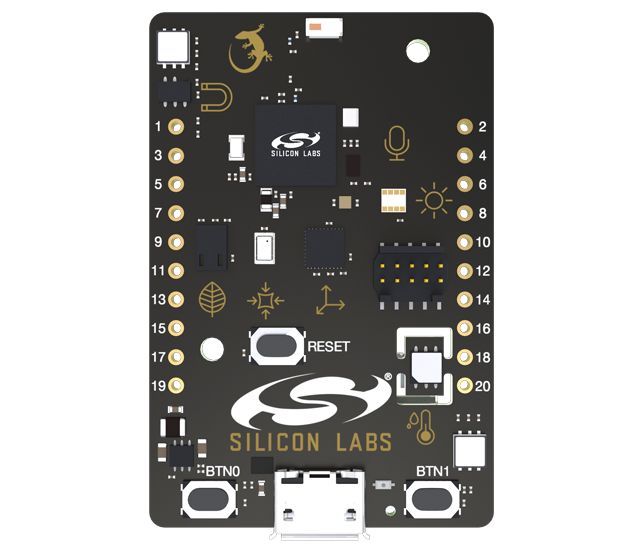Running machine learning (ML) models on microcontrollers is one of the most exciting developments of the past years, allowing small battery-powered devices to detect complex motions, recognize sounds, or find anomalies in sensor data. To make it easy to build and deploy these models on ultra-low power silicon we have partnered with Silicon Labs to bring support for the Thunderboard Sense 2 to Edge Impulse - giving developers an easy way to collect data, build models, and then deploy to any EFR32/EFM32 MCU.

The Thunderboard Sense 2 is an amazingly compact and feature-packed development board, combining a fast Cortex-M4F MCU with plenty of RAM with a wide range of sensors, from indoor air quality and gas to an IMU sensor to a digital microphone. On top of that the SoC has a multi-protocol radio that supports Bluetooth Low Energy and it comes with a coin cell holder. Already a pretty amazing offering at just $19.99. But with our new partnership it’s becoming even more useful!
Using Edge Impulse developers can now use machine learning to turn this development board into a device that can make complex decisions on its own. Detecting abnormal vibrations? Check. Recognizing an audible fault state on a machine? No problem. Edge Impulse lets you quickly collect real-world sensor data, train ML models on this data in the cloud, and then deploy the model back to your Thunderboard Sense 2.
After initial development you can then integrate the model into your existing Simplicity Studio projects with a single function call. All generated models fully utilize the underlying hardware - including vector extensions - to ensure that they run as fast and energy efficient as possible - and will run on most EFM32 and EFR32 series MCUs. In addition, the Thunderboard Sense 2 supports Edge Impulse EON - which runs the same neural networks in 50% less memory.
Excited?! Here’s how to get started in three easy steps:
- Grab the Silicon Labs Thunderboard Sense 2, and connect it to Edge Impulse.
- Follow one of our tutorials on either:
- Head to the Deployment page in Edge Impulse and deploy as a C++ library - which integrates with any Simplicity Studio project - or as a ready-to-go binary for the SiLabs Thunderboard Sense 2.
Naturally the fun does not end there. If you have an idea that’s not covered by any of the tutorials? No problem! The Data forwarder lets you use any sensor on the board to build your ML models. Want to use Bluetooth Low Energy to send the results of your ML models to a nearby smartphone? We’ve got you covered there as well. Any other questions? Please let us know on the Edge Impulse forums.
No hardware yet, or want to learn more? Sign up for our workshop at the TinyML summit: where the first 250 registrants will receive a free Thunderboard Sense 2 (yes, really!). Register here for the summit, then join our workshop to participate.
Jan Jongboom is the CTO and cofounder of Edge Impulse.
